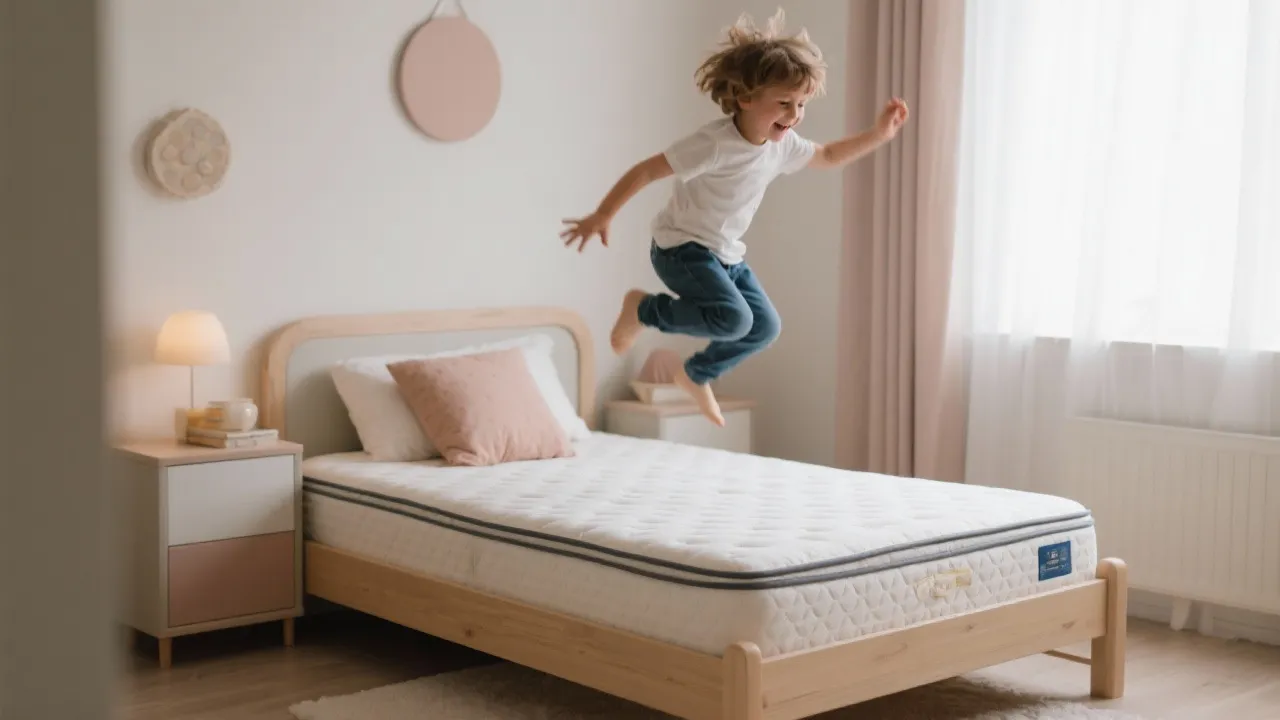Selecting the right junior bed mattress is a crucial decision for parents aiming to ensure comfort and safety for their children. The transition from crib to junior bed signifies a significant development phase, demanding attention to factors like mattress size, material, and durability. This guide provides expert insights into selecting the top mattress for junior beds, balancing quality, and affordability.

When transitioning your child from a crib to a junior bed, one of the very crucial considerations is the choice of mattress. A junior bed mattress not only provides support for growing bodies, but it also plays a significant role in ensuring restful sleep and healthy development. Understanding the essentials of choosing an appropriate mattress can make a significant difference in comfort and longevity. With a myriad of options available on the market today, it is essential to sift through the noise and understand the criteria that genuinely matter in promoting your child's sleep health.
The importance of selecting the right junior bed mattress extends beyond simple preferences. Children's bodies are continually developing, and maintaining spinal alignment during these formative years is crucial. The right mattress should support natural body curves, distribute weight evenly, and reduce pressure points to accommodate various sleeping positions. Inadequate support may lead to discomfort and sleep disturbances, ultimately affecting a child's mood and behavior throughout the day. By establishing healthy sleeping patterns early, parents can help foster a positive relationship with sleep, ensuring their child is well-rested and ready to learn and explore.
When shopping for a junior bed mattress, parents should focus on several critical criteria:
Understanding the different materials used in junior bed mattresses helps parents make informed choices. Below is a comparison table featuring common materials:
| Material | Pros | Cons |
|---|---|---|
| Memory Foam | Conforms to body, provides excellent pressure relief; ideal for children who move a lot during the night and need comfort. | May retain heat, can off-gas initially, which can be a concern for sensitive children. |
| Latex | Hypoallergenic, durable, provides good support while being breathable which helps regulate temperature. | Can be expensive; some brands may use synthetic latex which may not be ideal for eco-conscious families. |
| Innerspring | Affordable, good air circulation which can help keep your child cool at night; widely available in different firmness levels. | Can be noisy when moving; less durable over time as the coils can wear out and sag. |
The firmness of the mattress is another integral aspect influencing children's sleep quality. While recommendations vary, the general consensus is that a medium-firm mattress suits most children. A mattress that is too soft can allow for excessive sinking, potentially misaligning the spine and leading to discomfort. On the other hand, a mattress that is too firm may cause pressure points, particularly around the shoulders, hips, and lower back.
To determine what firmness suits your child best, consider their weight and sleeping position. A child who sleeps on their back may find a medium-firm mattress to be ideal, as it supports the natural curve of the spine. Meanwhile, a side sleeper may prefer a mattress with a little more softness to accommodate their shoulder and hip areas and relieve pressure.
To ensure you're making the top decision for your child's sleeping needs, consider the following steps:
Once you've narrowed down your choices, it's time to test the mattress. Have your child lie down in their typical sleeping positions to gauge whether the mattress feels comfortable. Look for any signs of discomfort, such as fidgeting or changes in position. Spending a few minutes on each prospective mattress can provide authenticity to their initial reaction. Children often know instinctively what feels good to them, so trusting their feedback is essential.
When selecting a mattress, certifications provide peace of mind regarding the safety and quality of materials used. Some of the key certifications to look out for include:
These certifications serve not just to reassure parents, but also to contribute to an environmentally responsible purchase that aligns with wellness-focused values. Always take a moment to check for relevant certifications before concluding a purchase.
Selecting the right junior bed mattress requires thoughtful consideration of multiple factors, ranging from safety and comfort to longevity and materials. By understanding the essentials and making informed choices, parents can provide their children with a sleeping environment conducive to health and well-being, helping support their growth and development effectively. Additionally, investing in a quality mattress is an investment in your child's overall quality of life—enabling them to enjoy restorative sleep that enhances their cognitive and emotional capacities.
Once you have chosen the perfect mattress, the next step is to create an inviting sleep environment around it. A child's bedroom should be a sanctuary for relaxation, promoting good sleep hygiene. Here are some tips to set up an ideal sleep space:
Equipping your child with a high-quality junior bed mattress is just the first step in fostering a healthy sleeping environment. The overall design, atmosphere, and domestic practices surrounding bedtime also play crucial roles in how well a child sleeps. By focusing on comfort, safety, and environment, parents can significantly impact their child's growth and development positively. As children grow, cultivating good sleep habits and a well-designed sleeping environment ensures they enjoy every precious moment of restful sleep while developing a lifelong appreciation for the importance of good sleep health.
Explore the Tranquil Bliss of Idyllic Rural Retreats

Ultimate Countdown: The 20 Very Legendary Gaming Consoles Ever!

Affordable Full Mouth Dental Implants Near You

Discovering Springdale Estates

Embark on Effortless Adventures: Unveiling the Top in Adventures Made Easy Outdoor Equipment

Unlock the Full Potential of Your RAM 1500: Master the Art of Efficient Towing!

Dodge Ram: Redefining the Future of Full-Size Trucks with Unmatched Power and Innovation

Get New Phones Without Plans Easily

Smart Strategies to Slash Costs on Your Roof Replacement Endeavor
